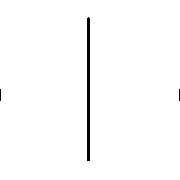|
looks good. my only note is that those spikes into your butthole might be a little uncomfortable after a while
|
|
|
|
|

|
| # ? Apr 23, 2024 16:47 |
|
Stick chairs have a very sculptural quality to them, hope it ends up sitting well too.
|
|
|
|
PokeJoe posted:looks good. my only note is that those spikes into your butthole might be a little uncomfortable after a while Good grip is undervalued in seating
|
|
|
|
Kaiser Schnitzel posted:Post pics of the current jointer.  It's a 37-280 Pulled the motor cover off, it has a toothed belt which seems a little incorrect. Motor pulleys were also misaligned, I got them mostly back in line now. Belt conditioner arrives tomorrow. You may notice the stand has a cardboard box custom built into it. That is because this piece of poo poo has no dust collection and instead just sprays chips everywhere, and this was my solution to maybe put a stop to that. One of the cardboard bits is held to the frame with magnets and I have to pull it off and sweep out the shavings every third board or so, which is another reason I hate it. Keep meaning to 3d print a dust port that I can maybe just shove into my dumb cardboard enclosure, but I genuinely do not like this jointer enough that I do all I can to just avoid having to use it. Though I suppose the only other jointer I've ever used was a massive 10" monster from the 30s or 40s, so I don't have a great well of comparison for how a jointer should sound/feel
|
|
|
|
Turns out this old weird corner bench from the old owners in our garage seems to have a decent enough frame when I removed all the crap on it and took off the old plywood top (my wife had been using it as it had a bunch of cubbies cribbed from particle board furniture screwed onto it). Most of the workbench videos I've seen have pretty complicated construction but is there much reason to do anything more elaborate than screw down some fresh plywood? That seems level enough on the frame I assume some sanding would get it fairly level (or as level as I get as someone perpetually crooked with everything).  Edit: are the screws an issue in a garage with big temperature swings? I haven’t done anything where I needed to worry about that before. The old plywood was nailed down but I don’t have a nailgun so that seems tedious. FuzzySlippers fucked around with this message at 11:55 on Apr 21, 2024 |
|
|
|
The screwed-together piece-of-junk workbench in my garage holds up fine. What kind of work are you envisioning here? Hand tool woodworkers seem to prize workbenches that are hefty and flat. The heft is to avoid movement when doing vigorous things like planing, but having your workbench being attached to the wall might compensate for that. Flatness is also good when planing (don't want the work piece bowing under the pressure) and as a flat reference surface. Power tool woodworkers seem less obsessed with these qualities. If it were me I might laminate two or three layers of 3/4" ply and screw it to that frame. Should be very sturdy and stay flat. My current workbench, which I'm planning on replacing as my next project, is just a single layer of 3/4" ply and I find it's too flimsy.
|
|
|
|
Mostly power tools. I haven't gone on the antiquing vision quest needed for less expensive hand planes, but I might do it one day (being able to flatten boards properly would certainly be nice). I've got two pieces of 3/4 plywood so I'll give that a go and I suppose I can always screw on another one if I find that insufficient.
|
|
|
|
a couple of 2x10s or some such would also probably do well there, depending on what you want. Look at Rex Kreuger's nicholson workbench tops
|
|
|
|
My previous owner made one like that, with a solid core door as the top. It's sturdy, supports a vice
|
|
|
|
Any tips for making templates? I'm making a plant stand with legs roughly shaped like this (I've tweaked some of the actual dimensions to look less dumb since I did the sketchup drawing, but the overall shape is the same): I've got the leg blanks, with joinery to the cross-pieces already cut, so all that I have left to do other than glueup, sanding, finishing, etc is to cut the legs to their final shape. I figured I would first make a template, then cut the rough shape of the legs on my little 10" bandsaw, then use a flush trim bit/pattern bit to get the legs to final shape. My plan to make the template was to rough cut it out of 1/4" MDF on the bandsaw and then trim it down to the lines on the belt/spindle sander, but that didn't go particularly well. I was struggling to keep the lines straight, and ended up making the surface that has the joinery for the crosspieces too small, which is the only part that's actually critical to get right. Since the template is all straight lines, my next thought is to make a series of jigs to position the piece of MDF to cut each of the lines on the table saw. There's still the interior corner to worry about, but I could get close and then clean up just that part with chisels/rasps/sanding. Does that seem like it makes sense? As I'm typing this I'm realizing the jig I need is basically a straight-line rip/tapering jig, so maybe it's time to make one of those for real.
|
|
|
|
more falafel please posted:Any tips for making templates? I'm making a plant stand with legs roughly shaped like this (I've tweaked some of the actual dimensions to look less dumb since I did the sketchup drawing, but the overall shape is the same): I use rasps, planes, and cheap, coarse harbor freight files a lot for patterns. I usually use half inch plywood because MDF is pretty hard on hand tools, but you can always sharpen hand tools, not a big deal. I prefer 1/2” stuff because it’s alot more meat for the bearing to ride on and is much stiffer and takes less fastening to the workpiece. You’re right that with the exception of a stationary disk/belt sander or sandpaper stuck to a block, sanding is almost never a good way to get a straight, precise line. I would probably do about what your describing-get as much as you can out of the machines (the straight lines) and then clean everything else up (inside curves) by hand with files and rasps. It’s really worth spending time to get the pattern just right. I would probably bandsaw those outside lines and get them straight on the jointer-exactly how you do that is gonna depend on your equipment. Table straight-line jig, bandsaw and handplane, router running against a fence are all just different ways to get where you want to go. You might want to look into making an L fence for your tablesaw (basically a fence that sits just above the blade). They are really handy for safely kinda free handing stuff on the tablesaw. Whiteside’s 1/2” spiral flush trim bits are really amazing. Not cheap but they make pattern work a ton easier because they largely ignore grain.
|
|
|
|
Kaiser Schnitzel posted:I use rasps, planes, and cheap, coarse harbor freight files a lot for patterns. I usually use half inch plywood because MDF is pretty hard on hand tools, but you can always sharpen hand tools, not a big deal. I prefer 1/2” stuff because it’s alot more meat for the bearing to ride on and is much stiffer and takes less fastening to the workpiece. You’re right that with the exception of a stationary disk/belt sander or sandpaper stuck to a block, sanding is almost never a good way to get a straight, precise line. I would probably do about what your describing-get as much as you can out of the machines (the straight lines) and then clean everything else up (inside curves) by hand with files and rasps. It’s really worth spending time to get the pattern just right. Thanks! I did end up making a straight line rip/taper jig to cut these wacky angles (and still had to cut into the fence of it just a little), but it turned out pretty perfect. Still need to clean up the inside corner, but I'll figure that out soon. 
|
|
|
|

|
| # ? Apr 23, 2024 16:47 |
|
Maybe I'm a lazy bum but with a shape like that I'd probably just make the pattern out of two pieces and stick them together.
|
|
|
























